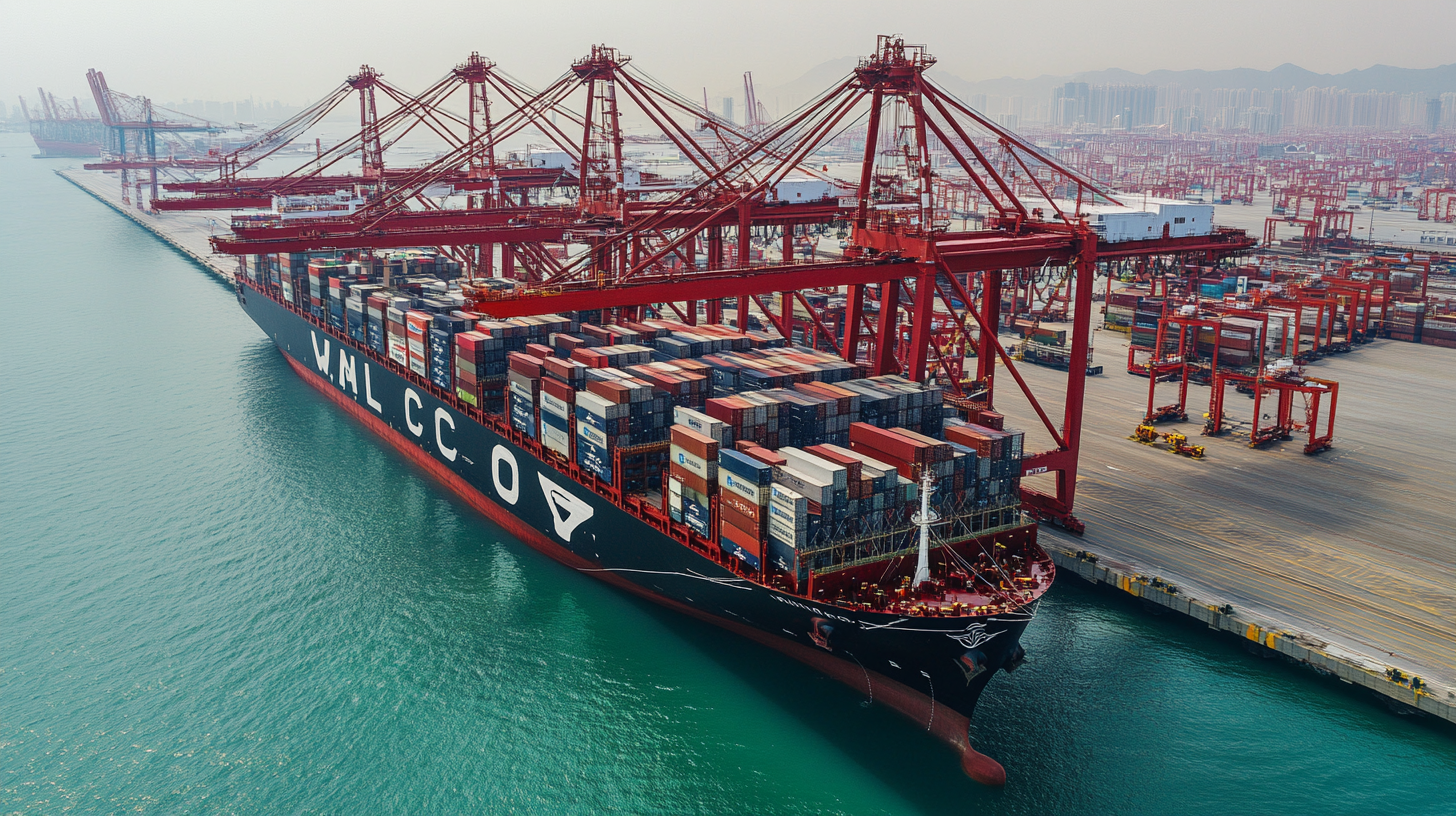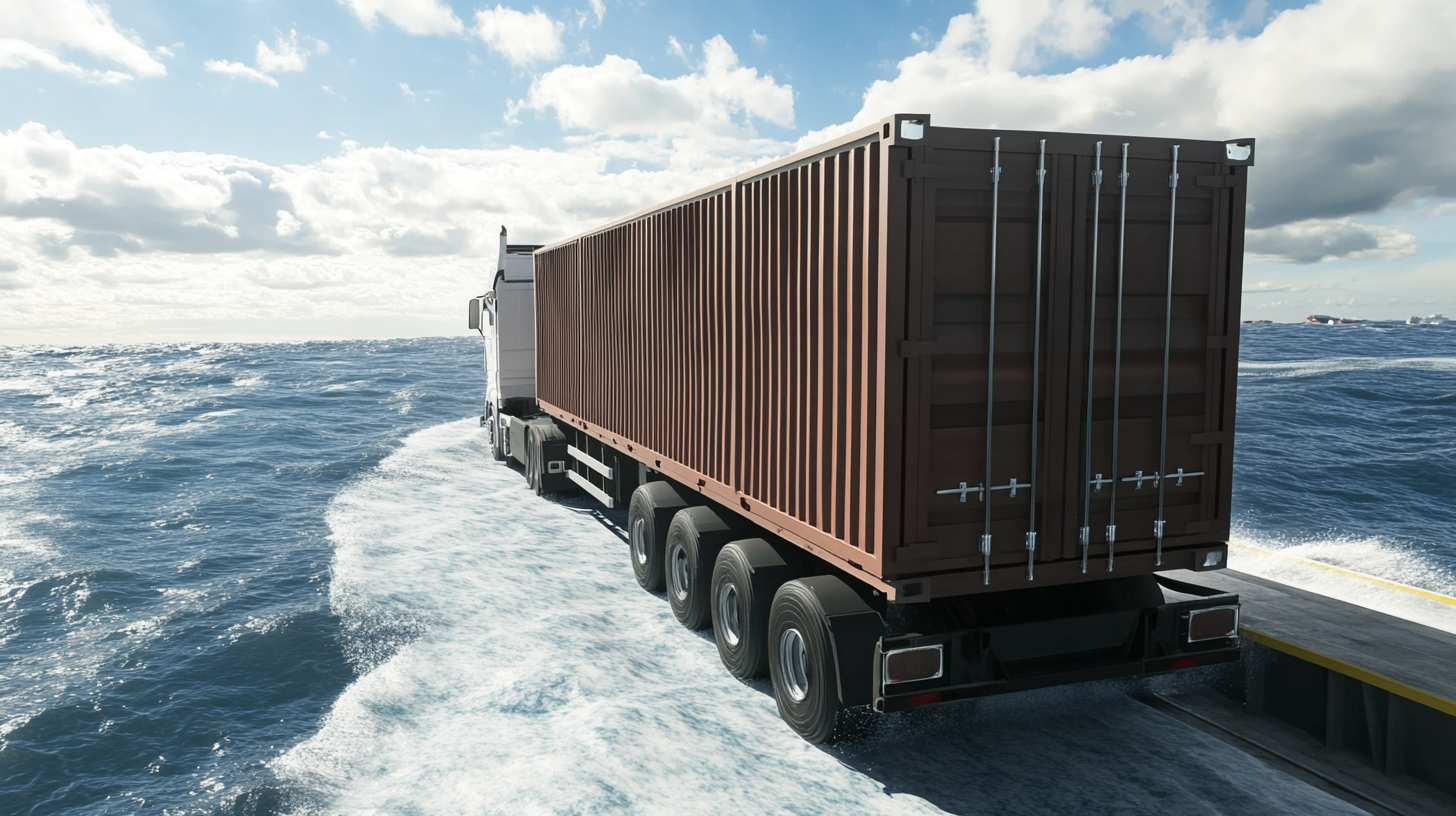In the complex world of international trade, ensuring the smooth movement of goods is paramount for global buyers. The process of shipping cargo involves numerous steps, from selecting the right shipping method to final delivery at the destination port. Every detail matters, especially when it comes to the cargo in ship, as any hiccup can lead to significant delays and increased costs. This ultimate guide aims to equip global buyers with the knowledge and strategies needed to navigate the intricacies of cargo management effectively. Whether you're a seasoned importer or new to international shipping, understanding the logistics of safely and efficiently getting your cargo in ship will empower you to make informed decisions and optimize your supply chain. Join us as we explore best practices, common pitfalls, and essential tips to ensure every shipment is a success.

Efficient cargo handling is crucial for global shipping, affecting both time and cost efficiency in the supply chain. According to a report by the International Maritime Organization, approximately 90% of the world's goods are transported by sea, highlighting the sector's significance. Delays in cargo handling can lead to increased shipping costs, with estimates suggesting that port congestion alone can raise costs by up to 50%. This emphasizes the need for shippers to prioritize effective cargo management strategies.
Investing in automated cargo handling systems can significantly improve efficiency. A study by the World Bank indicates that ports with advanced technology can reduce cargo processing times by over 20%. Additionally, proper training for staff involved in loading and unloading operations plays a vital role in minimizing errors and damages, which can cost the industry millions each year. For global buyers, understanding these dynamics is essential for fostering reliable logistics partnerships and ensuring timely delivery of goods. With a coordinated approach to cargo handling, businesses can enhance their operational efficiency and ultimately lead to improved customer satisfaction.
When selecting reliable shipping partners for global buyers, several key considerations come into play, particularly in light of the increasingly complex logistics landscape. Transportation might not be the first thought when running an e-commerce business, but it plays a crucial role in ensuring that operations thrive. According to industry reports, nearly 70% of e-commerce businesses cite logistics and supply chain management as a significant challenge, emphasizing the need for dependable shipping partnerships.
One vital factor to consider is the mode of transportation. The latest trends indicate that diverse shipping methods—such as air, sea, and rail—are evolving to meet specific market needs. For instance, sea freight remains essential for cost-effectiveness, while air freight is crucial for speed. This balance is particularly important for expanding businesses, especially in sectors like automotive, where timely delivery can make or break a market entry. The four decision-making elements for international expansion, including cost, time, reliability, and infrastructure, must be meticulously evaluated when choosing a logistics provider.
Furthermore, enhancing your shipping infrastructure with strategic resources like overseas warehouses can significantly improve market reach and response times. As cross-border e-commerce continues to grow, leveraging such facilities ensures that products are readily available in target markets, enhancing customer satisfaction and facilitating quicker transactions. For businesses looking to scale, forming partnerships with reliable shipping companies that prioritize sustainability and efficiency proves imperative in navigating the challenges of today’s global supply chains.

When preparing cargo for international transportation, the first step is to understand the specific requirements of the destination country. Each country has its own regulations regarding customs documentation, import duties, and product restrictions. Ensure that you gather all necessary paperwork, including commercial invoices, packing lists, and certificates of origin. This thorough preparation not only facilitates smoother customs clearance but also minimizes the chances of delays or additional charges at the destination.
Next, proper packaging is essential for protecting your cargo during transit. Choose materials that can withstand the rigors of international shipping, such as sturdy boxes or crates, and consider using cushioning materials like bubble wrap or foam for fragile items. Labeling is equally important; clear, accurate labels can prevent confusion and ensure your cargo is handled correctly at each stage of transport. Additionally, working with a reliable logistics provider can further streamline the process, as they can offer expert guidance on the best shipping methods and routes, as well as help manage the logistics of loading and unloading. By following these steps, you can ensure that your cargo is prepared thoroughly for international transportation, paving the way for a smoother shipping experience.
Customs clearance is a pivotal process in international shipping, ensuring that goods comply with regulations before they enter a new territory. For global buyers, understanding the nuances of customs documentation is essential for a smooth cargo experience. One of the first steps in this process is to prepare a comprehensive customs compliance checklist. This checklist should cover all necessary documentation, tariffs, and import regulations specific to the destination country. By being meticulous with paperwork, importers can minimize delays and avoid unexpected costs.
Furthermore, utilizing the Delivered Duty Paid (DDP) Incoterm can significantly streamline operations. Under DDP, the seller assumes responsibility for shipping costs and customs duties until goods are cleared and delivered. This method not only alleviates the burden from the buyer but also allows for better cost predictability during the shipping process.
In addition to these practices, leveraging digital solutions can enhance efficiency. The transition to electronic documentation, such as electronic bills of lading, can significantly reduce costs and expedite the customs clearance process. As global trade expands, adopting these best practices in customs clearance and documentation will be vital for success in international markets.
| Best Practices | Description | Benefits |
|---|---|---|
| Understand Local Regulations | Research and comply with the customs regulations of the importing country. | Reduces the risk of delays and fines. |
| Prepare Accurate Documentation | Ensure all invoices, packing lists, and certificates are complete and accurate. | Facilitates faster customs clearance and prevents disputes. |
| Work with Trusted Freight Forwarders | Choose reliable freight forwarders who understand the intricacies of global shipping. | Enhances reliability and efficiency of the shipping process. |
| Track Shipments | Utilize tracking systems to monitor the status of your shipments in real-time. | Increases transparency and allows for quick issue resolution. |
| Stay Updated on Trade Agreements | Stay informed about free trade agreements and tariffs that may affect shipping costs. | Can lead to cost savings and better pricing strategies. |
In today’s global marketplace, the importance of timely deliveries cannot be overstated, especially for cargo shipping. With the rise of e-commerce, customer expectations have shifted dramatically; surveys indicate that 78% of consumers expect their orders to arrive within two days, pushing the logistics industry to innovate and enhance efficiency. However, supply chain disruptions and rising transportation costs pose significant challenges. According to recent industry reports, nearly 60% of food distributors are grappling with increased freight costs, creating urgency to streamline operations and minimize delays.
One effective strategy for ensuring smooth cargo shipment is leveraging advanced technologies like Artificial Intelligence (AI). AI can enhance route optimization and predictive analytics, helping distributors make informed decisions that mitigate risks associated with shipping delays. For instance, logistics companies using AI-powered tools have reported a reduction in delivery times by up to 30%, ultimately improving customer satisfaction. Additionally, implementing a proactive communication system can keep stakeholders informed throughout the shipping process, reducing uncertainties that often lead to delays.
With these strategies in place, global buyers can navigate the complexities of international shipping and better meet their delivery commitments. It’s essential for businesses to adapt and strategize continuously, ensuring they can overcome ongoing challenges in the logistics landscape and meet the growing demand for timely deliveries.







